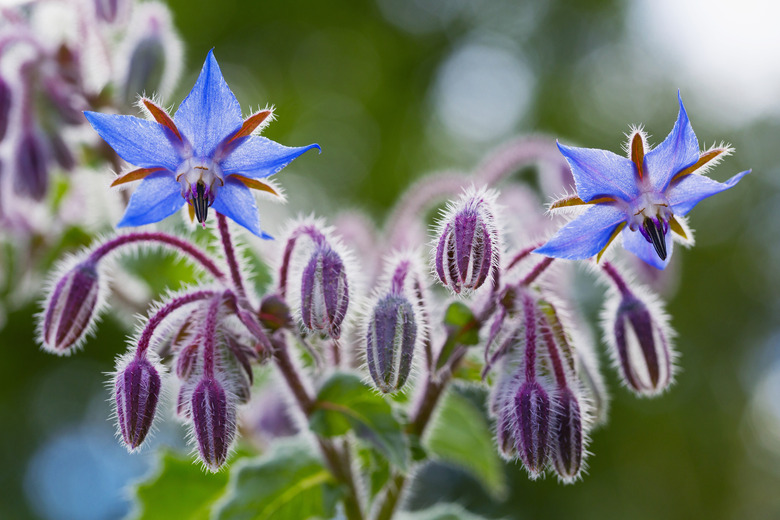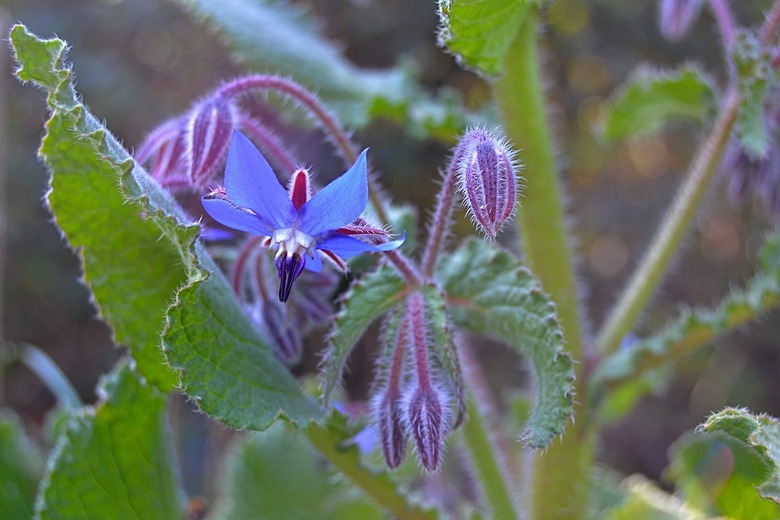How To Harvest & Preserve Borage
With its fuzzy blue buds and stunning star-shaped flowers atop deep green leaves, borage deserves a prominent spot in every herb garden.
Borage (Borago officinalis L.) attracts pollinators and birds and is known to deter a range of garden pests. Harvest borage just before the flower reaches full bloom; then preserve by drying or freezing.
How to Plant and Grow Borage
While you can find borage seedlings in a nursery, it is better to grow them from seed and plant them directly in the garden, because they develop a taproot that is easy to damage while transplanting.
You can also sow the seeds in biodegradable pots, then set them directly in the garden, which will preserve the roots without disruption. Plant them after your area's last frost.
Borage's growing requirements are simple and similar to many other herbs:
- Plant in a full-sun location (USDA zones 2-10) where they have room to spread; borage can reach 3 feet tall and 2 feet wide.
- Also be sure to plant in well-drained soil.
- Ensure even moisture, but let the soil dry out between waterings after the plants are established to avoid overwatering.
- Do not use fertilizer, especially fertilizers rich in nitrogen, or the plants may not bloom.
- Prune to encourage bushiness and new growth.
Companion Planting With Borage
Borage is a good companion plant to several veggies, as it is believed to strengthen other plants' resistances to diseases and pests. This is especially true for strawberries, but basil, leeks, kale, pumpkins, marigolds and others also grow well alongside it.
How to Harvest Borage
Harvest borage leaves when they are tender, when the plant is young and before the buds have developed flowers. You can also harvest tender leaves if you have heavily pruned your plant in mid-summer so that it has produced new growth.
Mature leaves are too prickly to harvest, so if they have developed hairy bristles, you probably want to avoid them.
Pick the flowers before they reach full bloom. You can use your fingers, pruners or just scissors to harvest both the flowers and leaves.
Tip
Try adding borage to your favorite salads, soups, desserts or even fizzy drinks!
How to Preserve Borage Leaves
Some growers recommend against trying to dry borage leaves, because their flavor loses its punch, so try to use the leaves fresh. But if you have a lot of leaves, try drying them to see how the flavor holds up. You can either dry or freeze both borage flowers and leaves.
Drying in the Microwave
To dry them in the microwave, spread them in a single layer on paper towels and microwave them for 1 to 3 minutes. You can also use a regular oven set to about 180°F. Leave them in for a few hours, but check every half-hour or so to avoid over-drying them.
Air Drying
Alternatively, air-dry them by placing them in a mesh bag and hanging them in a dry, cool location for a few days.
Freezing
To freeze leaves or flowers, put them in a plastic bag or freeze them in ice cubes with a little water.
FAQs About Borage
Here are a few frequently asked questions about borage:
How do you keep borage blooming?
Deadheading the plant will encourage it to bloom for another few weeks. Additionally, pruning it back in mid-summer will encourage new leaves to grow for harvest later on in the season.
What part of borage is edible?
Both the flowers and the leaves of borage are edible and often used as a garnish or vegetable in a variety of dishes, including salads, yogurt, cheese and soups. They can also be brewed into a tea or simply added as a flavor enhancer to different juices or carbonated beverages.

